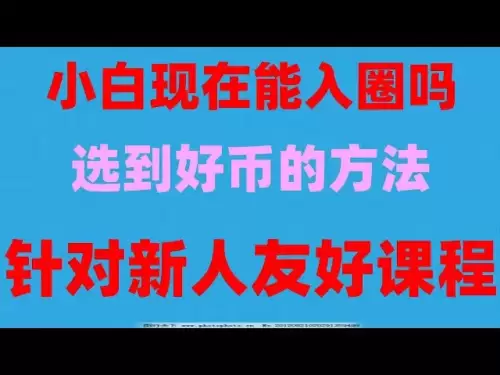-
 Bitcoin
Bitcoin $109,666.3557
2.63% -
 Ethereum
Ethereum $2,551.8429
1.07% -
 Tether USDt
Tether USDt $1.0003
0.00% -
 XRP
XRP $2.3987
1.78% -
 BNB
BNB $673.2364
3.52% -
 Solana
Solana $173.6663
3.07% -
 USDC
USDC $0.9998
0.00% -
 Dogecoin
Dogecoin $0.2341
3.49% -
 Cardano
Cardano $0.7699
3.21% -
 TRON
TRON $0.2685
-0.26% -
 Sui
Sui $3.9306
2.02% -
 Chainlink
Chainlink $16.1105
2.59% -
 Avalanche
Avalanche $23.1864
2.67% -
 Hyperliquid
Hyperliquid $28.2570
6.69% -
 Stellar
Stellar $0.2934
2.01% -
 Shiba Inu
Shiba Inu $0.0...01483
1.58% -
 Hedera
Hedera $0.1982
1.65% -
 UNUS SED LEO
UNUS SED LEO $8.8696
1.03% -
 Bitcoin Cash
Bitcoin Cash $407.5534
3.42% -
 Toncoin
Toncoin $3.0951
0.33% -
 Polkadot
Polkadot $4.7448
1.48% -
 Litecoin
Litecoin $97.2611
3.03% -
 Monero
Monero $397.3865
12.87% -
 Bitget Token
Bitget Token $5.2518
1.99% -
 Pi
Pi $0.8502
11.74% -
 Pepe
Pepe $0.0...01366
3.85% -
 Dai
Dai $0.9998
-0.01% -
 Ethena USDe
Ethena USDe $1.0006
0.02% -
 Bittensor
Bittensor $449.8172
8.34% -
 Uniswap
Uniswap $6.2189
3.35%
How to use Bollinger Bands in combination with trend lines? How to improve accuracy?
Bollinger Bands and trend lines enhance crypto trading by measuring volatility and visualizing market direction, offering nuanced insights when combined.
May 21, 2025 at 10:50 pm
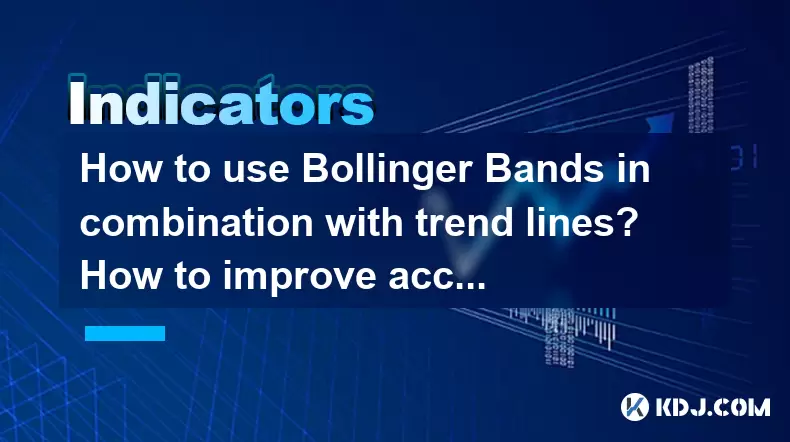
Bollinger Bands and trend lines are two powerful tools in the arsenal of any cryptocurrency trader looking to enhance their technical analysis. Bollinger Bands are used to measure market volatility and identify overbought or oversold conditions, while trend lines help traders visualize the direction of the market. Combining these tools can offer a more nuanced approach to trading, providing insights that might be missed when using them in isolation. In this article, we will explore how to effectively use Bollinger Bands in combination with trend lines and discuss strategies to improve the accuracy of your trading decisions.
Understanding Bollinger Bands
Bollinger Bands consist of three lines: a middle band, an upper band, and a lower band. The middle band is typically a simple moving average (SMA) of the closing prices over a specific period, often set to 20 days. The upper and lower bands are calculated by adding and subtracting two standard deviations from the middle band, respectively.
When the price of a cryptocurrency touches or crosses the upper band, it may be considered overbought, suggesting a potential sell signal. Conversely, when the price touches or crosses the lower band, it may be considered oversold, indicating a potential buy signal. However, these signals should be used in conjunction with other indicators to avoid false positives.
Understanding Trend Lines
Trend lines are straight lines drawn on a chart to connect a series of prices, helping to identify the direction of the market. An uptrend line is drawn along the lows of the price action, indicating that the price is generally increasing. A downtrend line is drawn along the highs of the price action, indicating that the price is generally decreasing.
Trend lines can be used to identify potential support and resistance levels. When the price approaches a trend line, it may either bounce off it, confirming the trend, or break through it, signaling a potential reversal.
Combining Bollinger Bands and Trend Lines
To combine Bollinger Bands and trend lines effectively, traders should look for instances where these two tools provide complementary signals. Here’s how you can do it:
- Identify the Trend: Start by drawing a trend line on your chart. If you’re looking at an uptrend, draw the line along the lows of the price action. For a downtrend, draw the line along the highs.
- Overlay Bollinger Bands: Once you have your trend line, overlay Bollinger Bands on the chart. Make sure the period and standard deviation settings are appropriate for your trading strategy.
- Look for Confluence: Pay attention to areas where the price touches both the trend line and one of the Bollinger Bands. For example, in an uptrend, if the price touches the lower Bollinger Band and the trend line simultaneously, it could be a strong buy signal. Conversely, in a downtrend, if the price touches the upper Bollinger Band and the trend line at the same time, it could be a strong sell signal.
Improving Accuracy with Bollinger Bands and Trend Lines
While combining Bollinger Bands and trend lines can provide valuable insights, it’s important to take steps to improve the accuracy of your trading signals. Here are some strategies to consider:
- Use Multiple Timeframes: Analyzing the same asset across different timeframes can help confirm trends and signals. For instance, if you see a buy signal on a daily chart, check the weekly chart to see if the trend is also bullish on a larger scale.
- Incorporate Other Indicators: Bollinger Bands and trend lines can be used in conjunction with other technical indicators, such as the Relative Strength Index (RSI) or Moving Average Convergence Divergence (MACD), to confirm signals. For example, if the RSI indicates an oversold condition when the price touches the lower Bollinger Band and the trend line, it strengthens the buy signal.
- Backtest Your Strategy: Before applying your strategy to live trading, backtest it using historical data. This can help you understand how your strategy would have performed in the past and identify any potential weaknesses.
- Set Stop-Losses and Take-Profits: Always use stop-loss orders to limit potential losses and take-profit orders to secure gains. These can help you manage risk and ensure that you stick to your trading plan.
Practical Application of Bollinger Bands and Trend Lines
Let’s walk through a practical example of how to use Bollinger Bands and trend lines in a trading scenario:
- Step 1: Open your trading platform and select the cryptocurrency pair you want to analyze.
- Step 2: Draw a trend line on the chart. For this example, let’s assume we’re looking at an uptrend. Connect at least two lows with the trend line.
- Step 3: Overlay Bollinger Bands on the chart. Use the default settings of a 20-day SMA and two standard deviations.
- Step 4: Monitor the price action. When the price touches the lower Bollinger Band and the trend line simultaneously, consider this a potential buy signal.
- Step 5: Before entering a trade, confirm the signal with other indicators, such as the RSI. If the RSI is also indicating an oversold condition, the buy signal is strengthened.
- Step 6: Enter the trade and set a stop-loss just below the trend line to manage risk. Set a take-profit level based on your analysis of potential resistance levels.
Fine-Tuning Your Strategy
To fine-tune your strategy using Bollinger Bands and trend lines, consider the following adjustments:
- Adjust Bollinger Band Settings: Depending on the volatility of the cryptocurrency you’re trading, you may need to adjust the period and standard deviation settings of the Bollinger Bands. For highly volatile assets, you might want to use a shorter period and a larger standard deviation to capture more frequent signals.
- Refine Trend Line Placement: Pay close attention to the placement of your trend lines. Ensure that they are drawn accurately and that they connect significant price points. Sometimes, drawing multiple trend lines and observing which one the price respects more can be beneficial.
- Monitor Market Conditions: Keep an eye on overall market conditions and news events that could impact the price of the cryptocurrency you’re trading. For example, if there’s a major announcement expected, it might be wise to wait until after the event to make trading decisions.
FAQs
Q: Can Bollinger Bands and trend lines be used for all cryptocurrencies?
A: Yes, Bollinger Bands and trend lines can be applied to any cryptocurrency. However, the effectiveness of these tools may vary depending on the volatility and trading volume of the specific cryptocurrency. Highly volatile assets might require more frequent adjustments to the settings of the Bollinger Bands.
Q: How often should I redraw my trend lines?
A: Trend lines should be redrawn whenever the price action invalidates the current line. This could happen if the price breaks through the trend line and continues in the opposite direction, or if new price points emerge that are more significant than the ones used to draw the original line.
Q: What should I do if the price frequently touches the Bollinger Bands but doesn’t break them?
A: If the price frequently touches the Bollinger Bands but doesn’t break them, it might indicate a period of consolidation or a strong trend. In such cases, you might want to wait for a clear breakout or use other indicators to confirm the strength of the trend before making a trading decision.
Q: Can Bollinger Bands and trend lines be used for short-term trading?
A: Yes, Bollinger Bands and trend lines can be used for short-term trading. However, you may need to adjust the settings of the Bollinger Bands to shorter periods and use shorter timeframes for your charts to capture more frequent signals. Always ensure that you are using appropriate risk management techniques when trading on shorter timeframes.
Disclaimer:info@kdj.com
The information provided is not trading advice. kdj.com does not assume any responsibility for any investments made based on the information provided in this article. Cryptocurrencies are highly volatile and it is highly recommended that you invest with caution after thorough research!
If you believe that the content used on this website infringes your copyright, please contact us immediately (info@kdj.com) and we will delete it promptly.
- Space and Time announces that its indexing infrastructure is now available on Microsoft Fabric.
- 2025-05-22 08:10:12
- PAIRMiner: The Best Cryptocurrency Cloud Mining Platform in 2025
- 2025-05-22 08:10:12
- Bprotocol Foundation Sues Uniswap Labs for Infringing on Its CPAMM Patent
- 2025-05-22 08:05:13
- Beyond Ethereum & Cardano Hype: Unveiling the Early-Stage Gem with Moonshot Potential
- 2025-05-22 08:05:13
- Troller Cat ($TCAT): The Next Big Meme Coin to Explode With 4453% ROI Potential as Brett and Official Trump Show Muscle
- 2025-05-22 08:00:26
- Troller Cat ($TCAT) May Be the Moment When One Meme Coin Turns Utility into Dominance
- 2025-05-22 08:00:26
Related knowledge
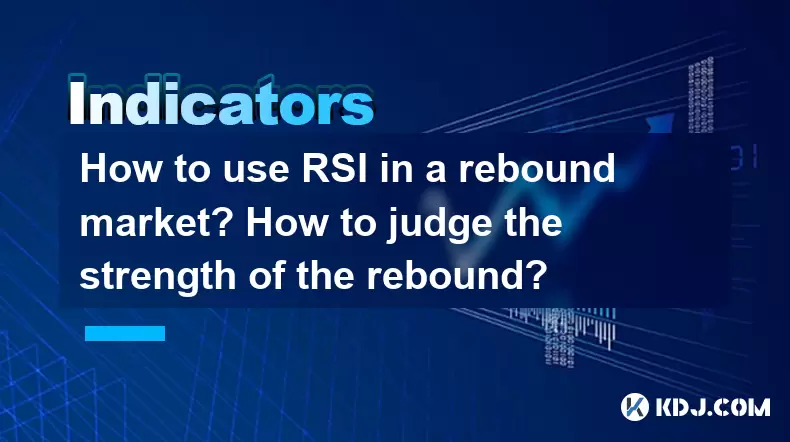
How to use RSI in a rebound market? How to judge the strength of the rebound?
May 22,2025 at 08:07am
The Relative Strength Index (RSI) is a momentum oscillator that measures the speed and change of price movements. It is widely used in the cryptocurrency market to identify overbought or oversold conditions, which can be particularly useful in a rebound market. In this article, we will explore how to effectively use the RSI in a rebound market and how t...
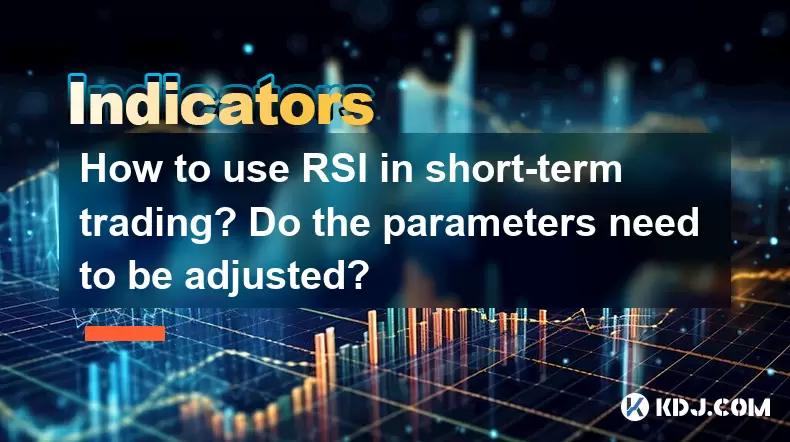
How to use RSI in short-term trading? Do the parameters need to be adjusted?
May 22,2025 at 07:07am
In the world of cryptocurrency trading, the Relative Strength Index (RSI) is a popular technical indicator used by many traders to make informed decisions. RSI is particularly useful in short-term trading as it helps identify potential reversal points in the market. This article will delve into how to use RSI effectively in short-term trading and whethe...
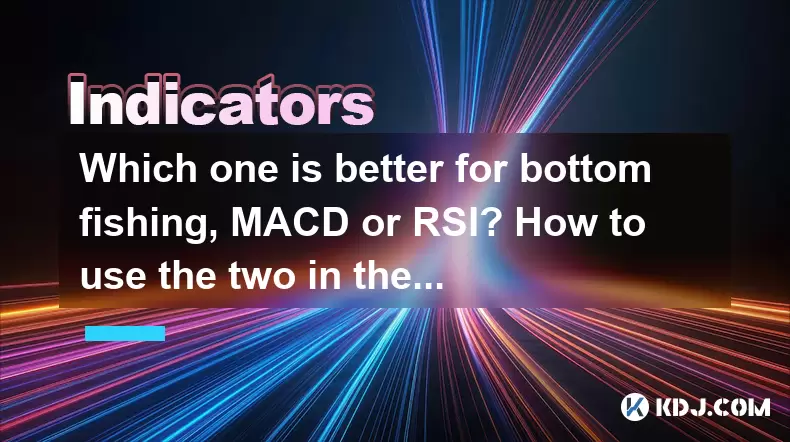
Which one is better for bottom fishing, MACD or RSI? How to use the two in the bottom area?
May 22,2025 at 06:36am
In the realm of cryptocurrency trading, bottom fishing refers to the strategy of buying assets that are believed to be undervalued with the expectation that their prices will rebound. Two popular technical indicators used for this purpose are the Moving Average Convergence Divergence (MACD) and the Relative Strength Index (RSI). Each of these tools offe...
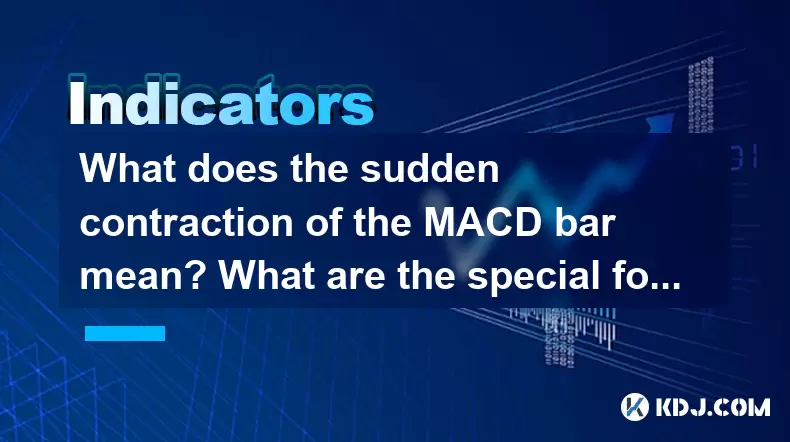
What does the sudden contraction of the MACD bar mean? What are the special forms when the main force controls the market?
May 22,2025 at 05:42am
The Moving Average Convergence Divergence (MACD) is a trend-following momentum indicator that shows the relationship between two moving averages of a security’s price. A sudden contraction of the MACD bar can signal important changes in market dynamics, often hinting at potential shifts in price momentum. Understanding these signals, along with the spec...
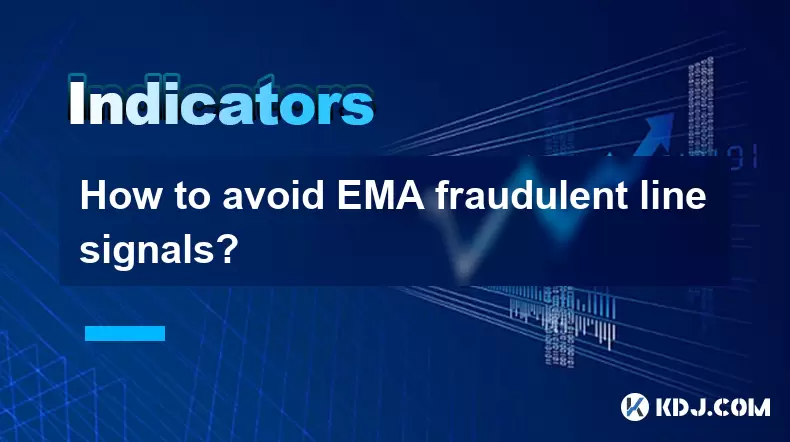
How to avoid EMA fraudulent line signals?
May 22,2025 at 08:42am
How to Avoid EMA Fraudulent Line Signals? In the world of cryptocurrency trading, the Exponential Moving Average (EMA) is a popular technical indicator used to identify trends and potential entry or exit points. However, traders often encounter fraudulent EMA line signals that can lead to significant financial losses. This article will explore strategie...
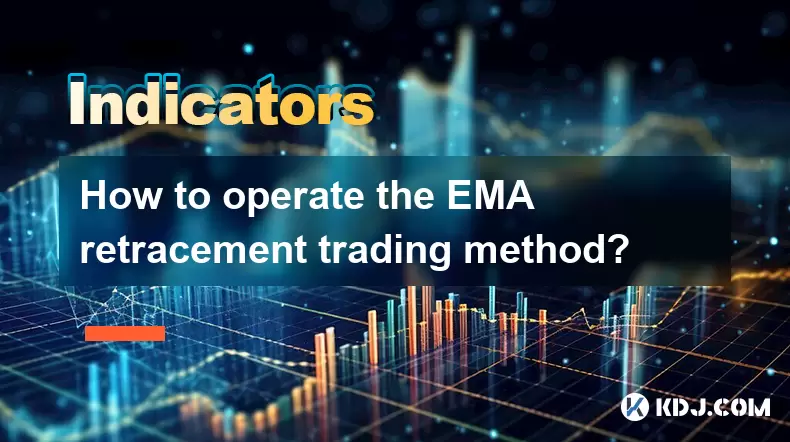
How to operate the EMA retracement trading method?
May 22,2025 at 04:35am
Introduction to EMA Retracement TradingThe EMA retracement trading method is a popular strategy among cryptocurrency traders that combines the use of Exponential Moving Averages (EMAs) with the concept of price retracements. This method helps traders identify potential entry and exit points by observing how price movements interact with different EMAs. ...

How to use RSI in a rebound market? How to judge the strength of the rebound?
May 22,2025 at 08:07am
The Relative Strength Index (RSI) is a momentum oscillator that measures the speed and change of price movements. It is widely used in the cryptocurrency market to identify overbought or oversold conditions, which can be particularly useful in a rebound market. In this article, we will explore how to effectively use the RSI in a rebound market and how t...

How to use RSI in short-term trading? Do the parameters need to be adjusted?
May 22,2025 at 07:07am
In the world of cryptocurrency trading, the Relative Strength Index (RSI) is a popular technical indicator used by many traders to make informed decisions. RSI is particularly useful in short-term trading as it helps identify potential reversal points in the market. This article will delve into how to use RSI effectively in short-term trading and whethe...

Which one is better for bottom fishing, MACD or RSI? How to use the two in the bottom area?
May 22,2025 at 06:36am
In the realm of cryptocurrency trading, bottom fishing refers to the strategy of buying assets that are believed to be undervalued with the expectation that their prices will rebound. Two popular technical indicators used for this purpose are the Moving Average Convergence Divergence (MACD) and the Relative Strength Index (RSI). Each of these tools offe...

What does the sudden contraction of the MACD bar mean? What are the special forms when the main force controls the market?
May 22,2025 at 05:42am
The Moving Average Convergence Divergence (MACD) is a trend-following momentum indicator that shows the relationship between two moving averages of a security’s price. A sudden contraction of the MACD bar can signal important changes in market dynamics, often hinting at potential shifts in price momentum. Understanding these signals, along with the spec...

How to avoid EMA fraudulent line signals?
May 22,2025 at 08:42am
How to Avoid EMA Fraudulent Line Signals? In the world of cryptocurrency trading, the Exponential Moving Average (EMA) is a popular technical indicator used to identify trends and potential entry or exit points. However, traders often encounter fraudulent EMA line signals that can lead to significant financial losses. This article will explore strategie...

How to operate the EMA retracement trading method?
May 22,2025 at 04:35am
Introduction to EMA Retracement TradingThe EMA retracement trading method is a popular strategy among cryptocurrency traders that combines the use of Exponential Moving Averages (EMAs) with the concept of price retracements. This method helps traders identify potential entry and exit points by observing how price movements interact with different EMAs. ...
See all articles






















